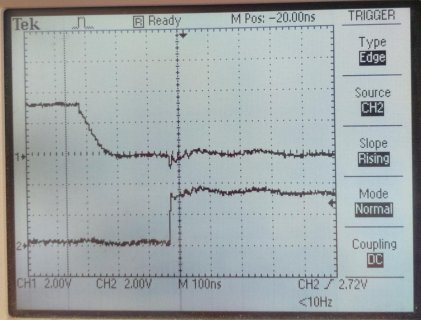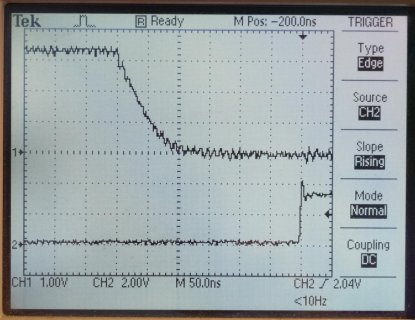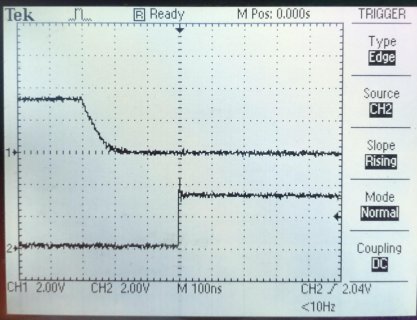I am occaisionally seeing extraneous interrupts occurring on a GPIO pin driven by a 250 Hz pulse train.
I am using Teesyduino 1.56 in PlatformIO on a T4.1.
I have set up the GPIO pin as an input with hysteresis and pulldown:
and this is my ISR:
microsCount() is actually using the 600Hz cycle counter to avoid any issue calling micros():
Occaisionally, maybe 3 times in 30 minutes for a 250 Hz pulse train, the ISR apparently triggers also on the falling edge in addition to the rising edge.
This is a scope capture of the unexpected behavior, where the DEBUG_GPIO_PIN0 goes high when the interrupt occurs sooner than expected. The scope is only 100MHz so it may be that I cannot see noise generating another rising edge trigger.

The slow transition time of 60 ns exceeds the datasheet stated minimum of 25 ns, and for that reason I added the hysteresis, but it did not affect the symptom.
Any help or comments would be very welcome.
Thanks!
I am using Teesyduino 1.56 in PlatformIO on a T4.1.
I have set up the GPIO pin as an input with hysteresis and pulldown:
Code:
pinMode(MAGDATA_PULSE_PIN, INPUT_PULLDOWN);
Code:
void magdataPulseISR( void ) {
static uint32_t lastTck =magdataPulseTimeUS;
static uint32_t diffTck = 0;
static bool firstTime = true;
DEBUG_GPIO_PIN0_CLEAR;
magdataPulseTimeUS = microsCount();
diffTck = magdataPulseTimeUS - lastTck;
if (!firstTime && (diffTck < 2000000)) { // trigger on frequency >> 250 Hz
DEBUG_GPIO_PIN0_SET;
capturedMagdataPulseTimeUS = magdataPulseTimeUS;
}
circular_buf_put(&magDataTimeUS_queue, magdataPulseTimeUS);
magdataPulseIntCount++;
firstTime = false;
lastTck = magdataPulseTimeUS;
asm volatile ("dsb");
}
Code:
uint32_t microsCount(void) {
return ARM_DWT_CYCCNT;
// WAS: return micros();
}This is a scope capture of the unexpected behavior, where the DEBUG_GPIO_PIN0 goes high when the interrupt occurs sooner than expected. The scope is only 100MHz so it may be that I cannot see noise generating another rising edge trigger.

The slow transition time of 60 ns exceeds the datasheet stated minimum of 25 ns, and for that reason I added the hysteresis, but it did not affect the symptom.
Any help or comments would be very welcome.
Thanks!



